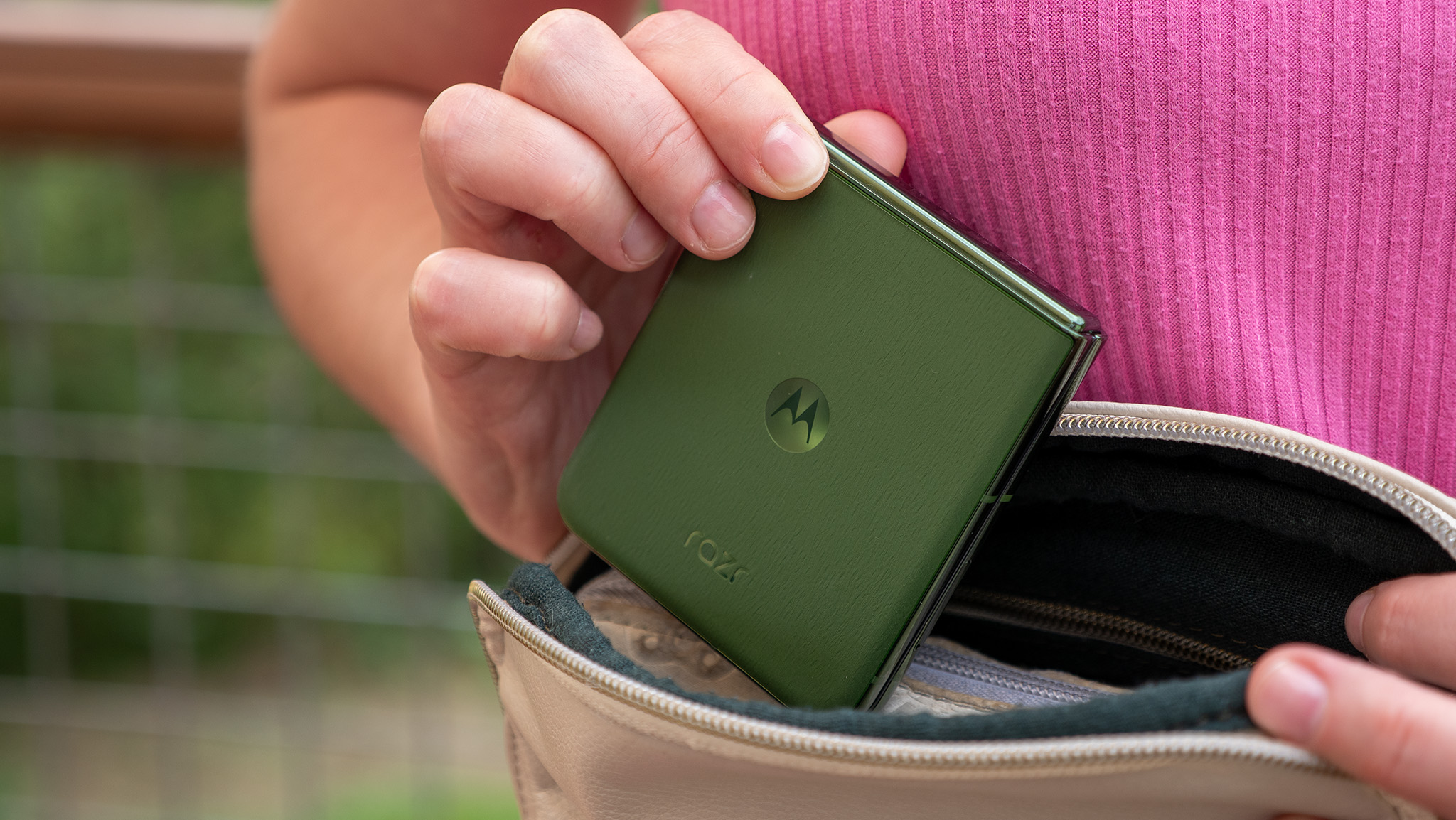Best Android gaming tablets 2025
Level up your mobile games with the best Android gaming tablets.
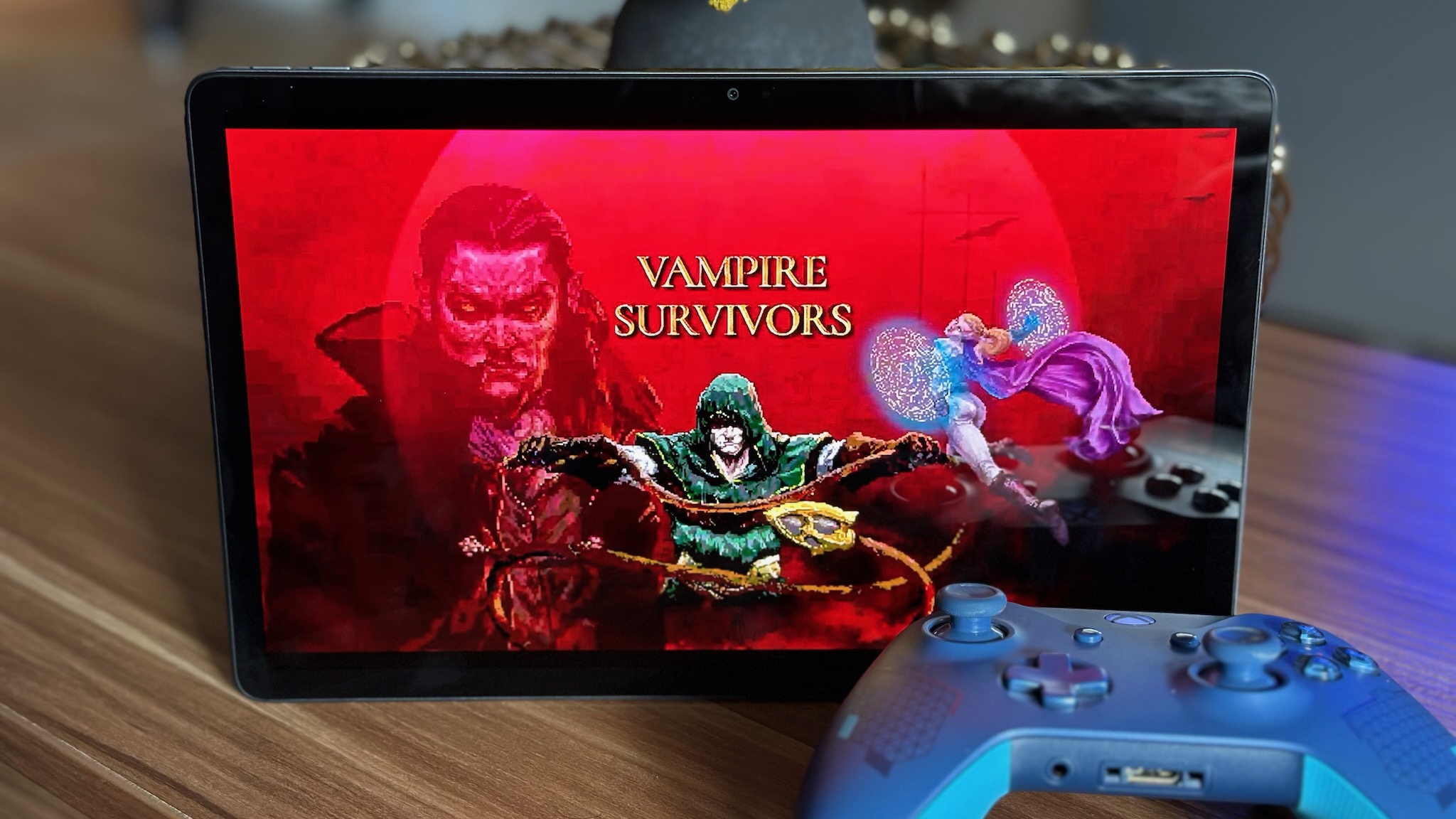
At a glance
1. Best overall
2. Best premium
3. Best mid-range
4. Best budget
5. Best for Play Pass users
6. Best for hardcore gamers
How to choose
The best Android gaming tablets combine the fun experiences of the Play Store with better visuals and performance than your typical phone offers. Instead of attaching a mobile controller to a phone and burning through your battery, you can use a gaming tablet and Bluetooth controller for a more enjoyable experience.
Not all of the best Android tablets are built for gaming. For premium Android games, a high-quality Snapdragon processor will affect the graphical quality or FPS rate you can use. You'll also want 120Hz refresh rates and rich surround sound audio.
We've compiled a list of some of the best Android gaming tablets you can find, starting with the Galaxy Tab S9 series.

Anthony Nash has been writing about games and the gaming industry for nearly a decade. When he’s not writing about games, he’s usually playing them. You can find him on Twitter talking about games or sports at @_anthonynash.
At a glance
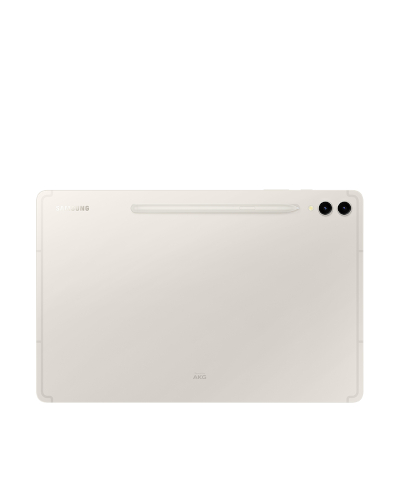
Best overall
The Galaxy Tab S9+ shines for mobile gaming with its Snapdragon 8 Gen 2 processor, 12.4" AMOLED display screen, and battery life of up to 16 hours.
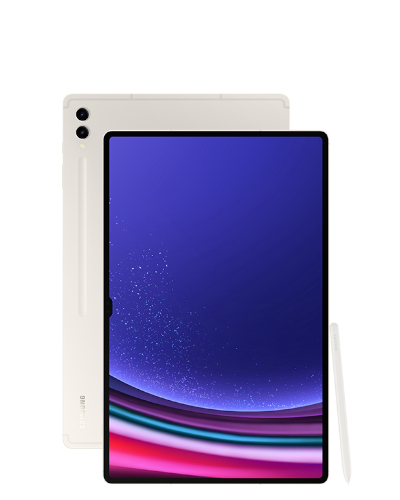
Best premium
Although it's pricey, the Samsung Galaxy Tab S9 Ultra is a fantastic luxury tablet with the same bells and whistles as the S9+ but with a larger 14.6" display size and stronger battery.

Best mid-range
The Lenovo Tab P11 Pro (2nd Gen) has a gorgeous 2K OLED display, a 120Hz refresh rate, and is even WiFi 6 certified to ensure your Fortnite sessions aren't disrupted by lag.
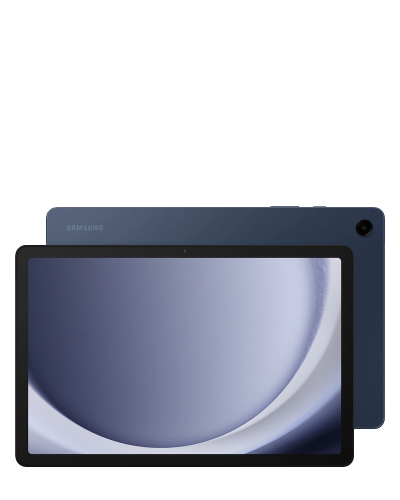
Best budget
The Samsung Galaxy Tab A9+ isn't built for robust gaming, but it gives you the Play Store, a large display with solid Hz and resolution, and respectable performance for much less.
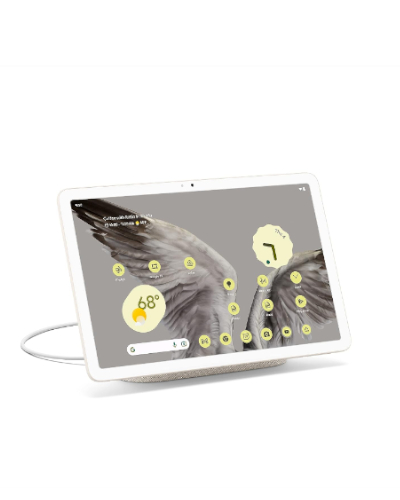
Best for Play Pass users
The Google Pixel Tablet is a no-brainer choice if you're already in the Google Pixel ecosystem, and it's a respectable choice for a gaming tablet, too.
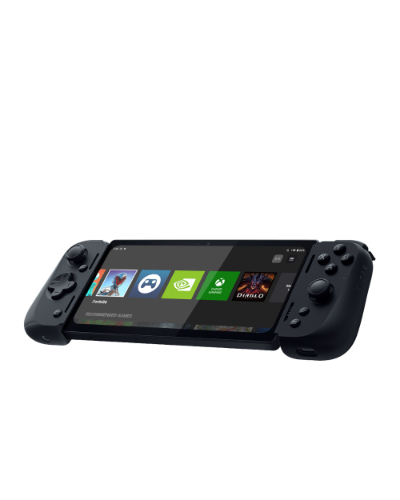
Best for hardcore gamers
If you're serious about gaming on a tablet and what a dedicated device then you can't get better than the Razer Edge, which even includes a Razer Kishi V2 Pro controller.
Best overall
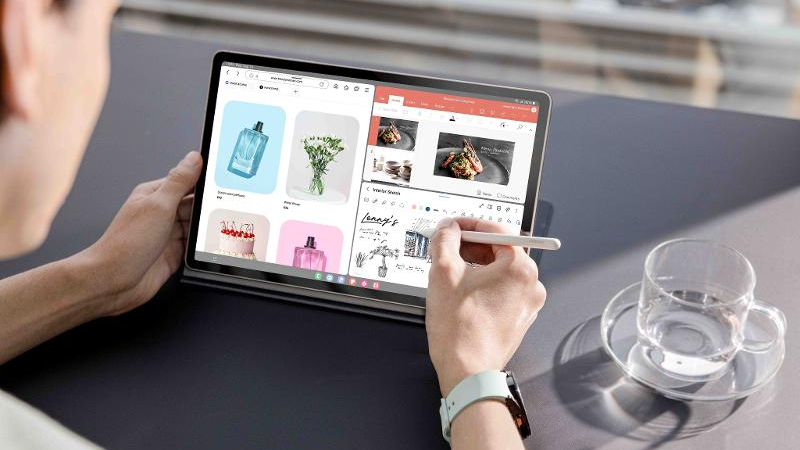
1. Samsung Galaxy Tab S9+
Our expert review:
Specifications
Reasons to buy
Reasons to avoid
Every model in the Samsung Galaxy Tab S9 lineup is an absolute banger, with the same high resolution, 120Hz refresh rate, at least 12GB of RAM, and a ton of internal and microSD storage space for huge game files with fast read/write speeds. They all share the Snapdragon 8 Gen 2 for Galaxy chip, a 2023 exclusive with higher clock speeds than any other flagship Android tablets or phones.
We chose the Galaxy Tab S9+ for our best Android gaming tablet because it starts at a higher RAM and storage than the Tab S9, with improved UFS 4.0 read/ write speeds for massive game files. You also get a 12.4-inch display, which isn't as portable as your typical 11-inch slab but makes a big difference for visibility when sitting on a desk.
The Tab S9+ is more affordable than the massive Tab S9 Ultra, our next pick, and it's your only option if you want to pick up a 5G version for cloud gaming on the road.
If you play graphically intensive games like Genshin Impact on high quality settings, the S9+ can handle 60FPS with no problems. The speaker quality is excellent, and the big battery will ensure you can game on the go without it dying mid-match. You'll want to buy a nice case to protect your tablet on the road, but it's IP68 water resistant to withstand any accidents.
Best premium
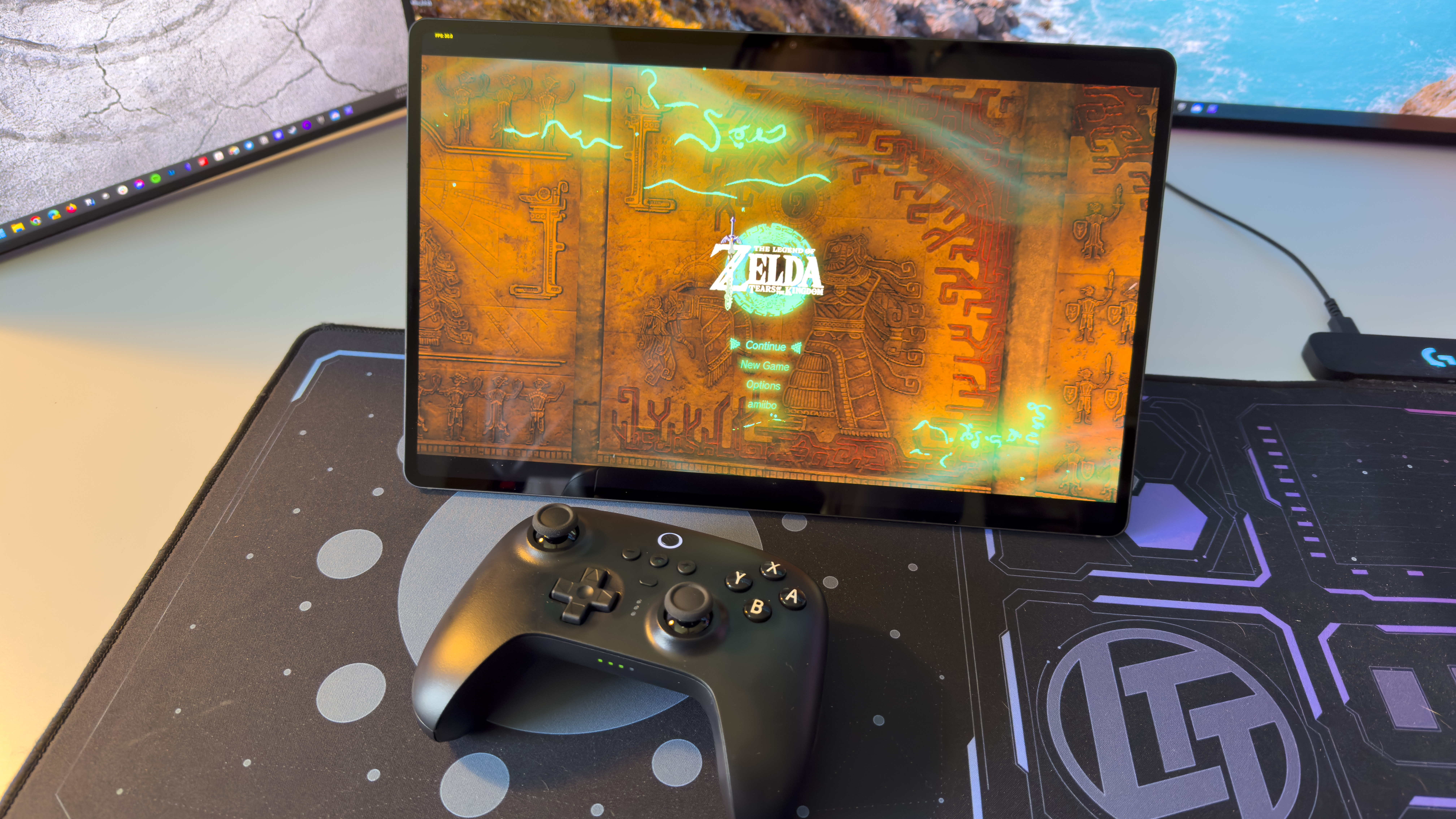
Specifications
Reasons to buy
Reasons to avoid
While the Galaxy Tab S9+ might be our best overall pick, it's impossible to ignore how fantastic its more luxurious sibling is. The Galaxy Tab S9 Ultra sports a huge 14.6-inch screen size to help showcase the games you play.
Like the Galaxy Tab S9+, it houses a powerful Snapdragon 8 Gen 2 processor that easily handles even the most demanding of graphics, plus four speakers for portable surround sound. Our Galaxy Tab S9 Ultra reviewer noted the "boost in performance" and "efficiency" thanks to the new chip, and that there is always "plenty of juice to head to the coffee shop" even after long gaming sessions.
Only the Galaxy Tab S9 Ultra lets you buy a 1TB variant with 16GB of RAM, matching many of the best gaming phones from ASUS or RedMagic for max memory. You also get the best possible nits of brightness via Samsung's Vision Booster, which matters if you plan to game outdoors.
You have two main downsides to consider. First, you're not going to want to play games in handheld mode with a 1.6-pound tablet; you'll want a gaming controller for your Android tablet, and Android games with controller support. Second, the Galaxy Tab S9 Ultra is painfully expensive, especially if you buy the 1TB version and the keyboard accessory that turns it into a mobile laptop.
Best mid-range

Specifications
Reasons to buy
Reasons to avoid
The Galaxy Tab S9 series is our favorite, but not everyone can afford one. We want to cater to folks that want solid gaming tablet performance without breaking the bank. That's where Lenovo's mid-range P11 Pro comes in.
Our Lenovo Tab P11 Pro (2nd Gen) review praised the tablet's "beautiful display," the consistent 14-hour battery life while streaming Netflix and playing Vampire Survivors, and the "power and richness of the quad JBL speakers." Plus, the 600-nit OLED display is solid. 11 inches won't give you as much gaming real estate as a Galaxy Tab S9+, but it'll be a heck of a lot easier to play games handheld if you want the option.
The Kompanio 1300 with 6GB of RAM means the P11 Pro isn't a powerhouse by any means, but it can run Genshin Impact on Medium graphics and handled other Android games or cloud streaming with ease. We did note some app "stuttering" at times, so you'll definitely want to avoid the 4GB version even if it's cheaper.
There aren't many reliable mid-range Android gaming tablets out there. Lenovo's closest rival in this area, the Galaxy Tab S9 FE, has an Exynos 1380 CPU with the same Arm cores; you can buy more RAM, but it comes to a much higher price point, taking you close to the regular Tab S9s.
Best budget
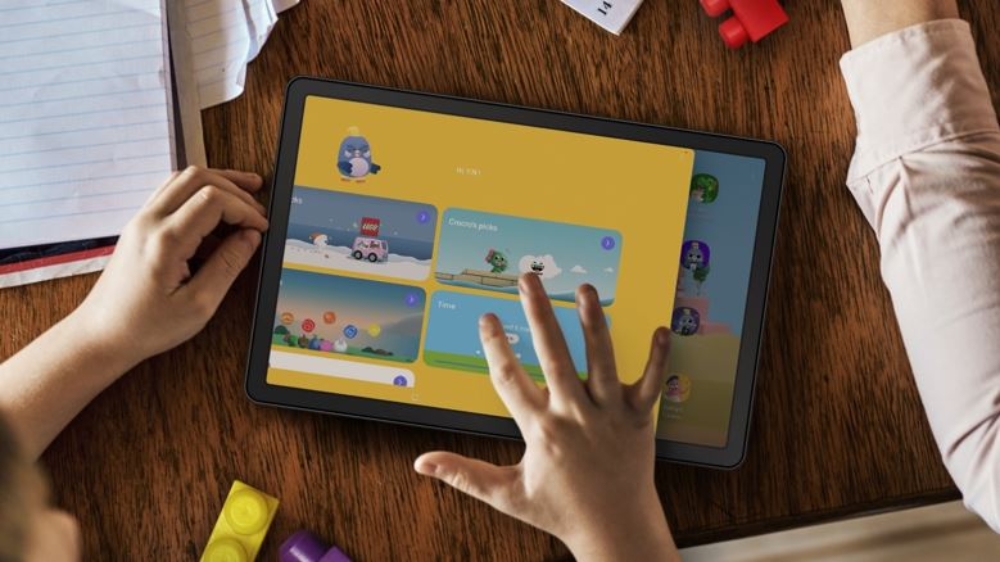
4. Samsung Galaxy Tab A9 Plus (2024)
Our expert review:
Specifications
Reasons to buy
Reasons to avoid
For people who think Android tablets should cost about the same as a Fire tablet, you'll find plenty of cheap tablet options but only a few good ones. Our top pick in this area is the Samsung Galaxy Tab A9 Plus (2024); it won't have you running Fortnite on the highest settings, but it'll give you the essentials.
The Tab A9+ has a 10.9-inch LCD display with 90Hz refresh rate — no more having to accept 60Hz at low price points — and a Snapdragon 695 5G chip found in budget phones like the Poco X5. Our reviewer was "able to play my favorite games, such as Genshin Impact, but I had to lower the graphics settings than usual" and dealt with some occasional lag and low frame rates.
Unfortunately, that's pretty normal in this price range. You shouldn't buy a cheap Android tablet for gaming unless you mean casual Android games, and this Snapdragon chip is a big step up over the Unisoc Tiger or MediaTek Helio chips found in past budget Samsung tablets.
Otherwise, this model is affordable, comfortable to hold for long stretches, and has the latest Android 14 software.
Best for Play Pass users
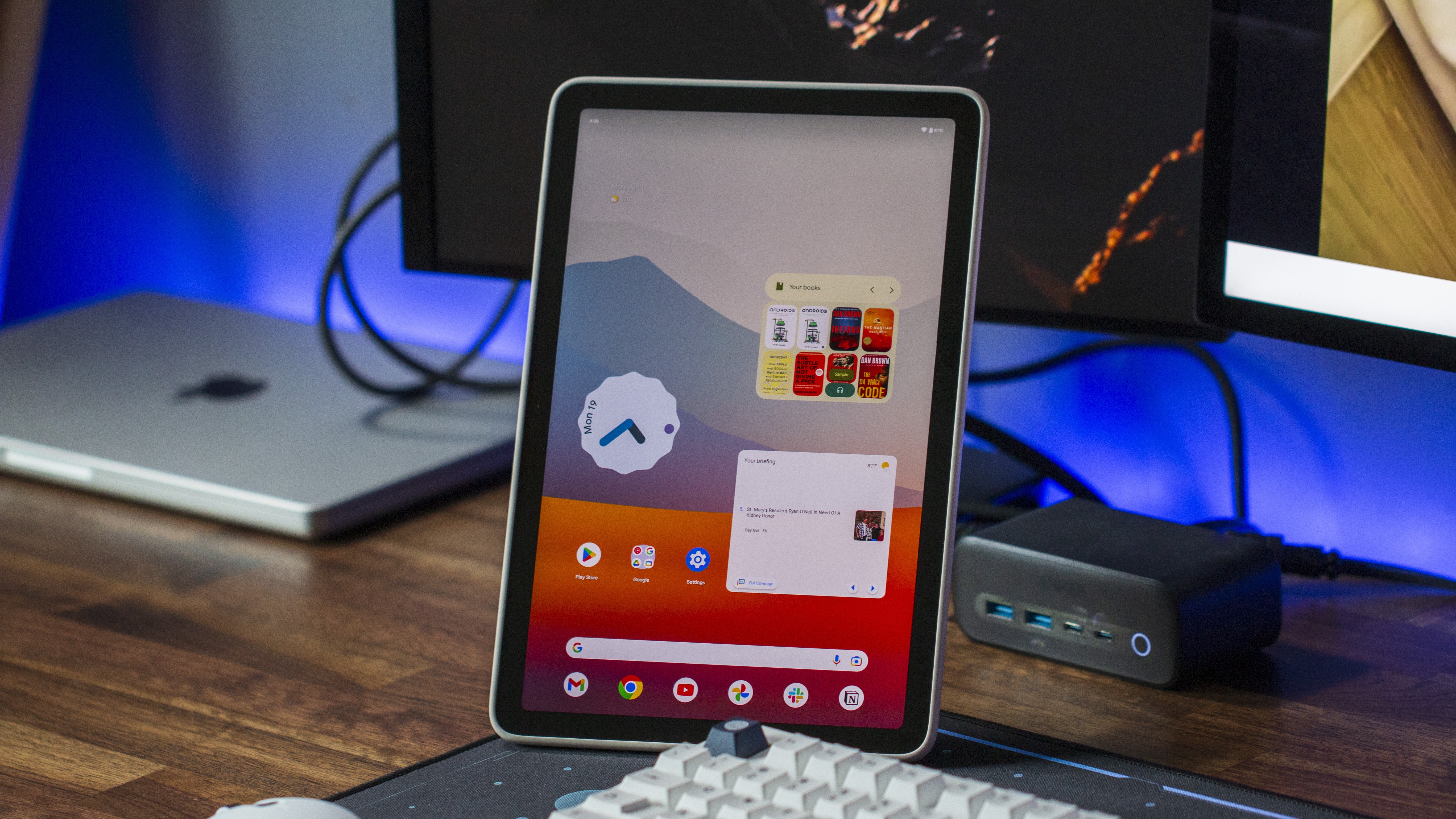
Specifications
Reasons to buy
Reasons to avoid
The Google Pixel Tablet is a strong mid-range tablet originally designed to be a smart home hub. You can still do so if you buy the bundled Charging Speaker Dock, but let's not get distracted: you're here for an affordable gaming tablet for mobile games, and the Pixel Tablet delivers.
The Google Tensor G2 isn't a powerhouse, but it is a former flagship chip for the Pixel 7. Compared to other chips on this list explicitly designed for budget models, the G2 gives you strong performance for a comparable price to the P11 Pro Gen 2.
Our Pixel Tablet reviewer noted that it can "handle pretty much all of the best Android games" and multitasking two apps at once thanks to the G2 and 8GB of RAM, but that it's not for "serious gaming." Look to the Tab S9 series for that, but the Pixel Tablet costs less than half the S9+ and should still handle popular Android games on decent settings. That's why we recommend this for Play Pass games or for Pixel fans who love Google's stock software.
A 60Hz LCD display doesn't quite match the visual standard of most of our other picks. Although this was designed with the Speaker Dock in mind, its built-in quad speakers do the job well enough — though we wish this had a 3.5mm headphone jack.
Best for hardcore gamers
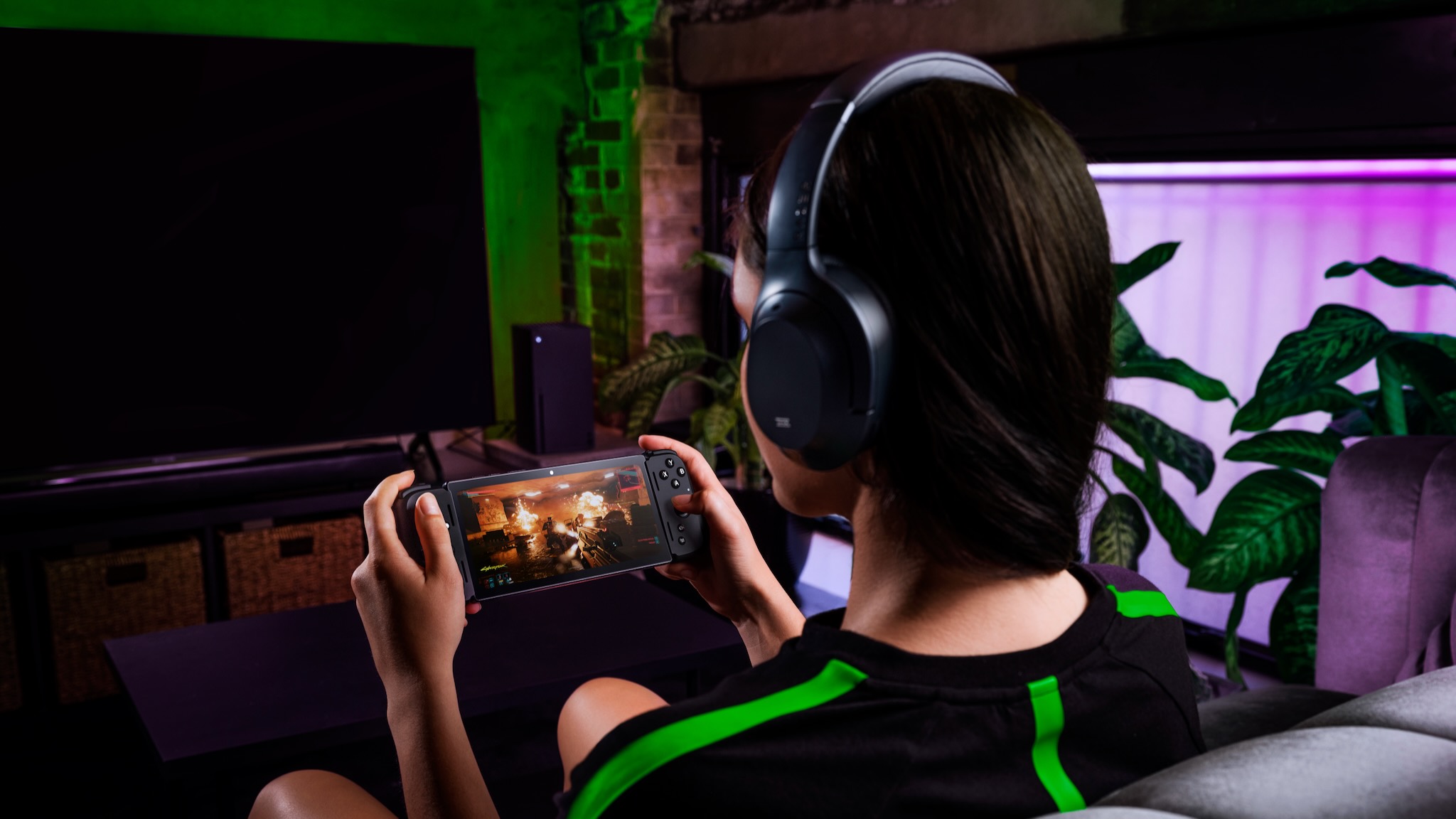
6. Razer Edge
Our expert review:
Specifications
Reasons to buy
Reasons to avoid
Gaming handhelds are the hot new trend, with portable designs, attached controllers, and either Android or Windows software built in to host various cloud gaming platforms, software, and emulators. We have a full list of the best Android gaming handheld consoles, and you can always look at non-Android handhelds like Steam Deck or ASUS ROG Ally.
We've narrowed things down to one pick — the Razer Edge — because of the hardware perks. It has a stunning, crisp AMOLED screen with a 144Hz refresh rate, so you'll never drop frames in mobile FPS games. The real star, however, is its Snapdragon G3x Gen 1 processor. It's ridiculously powerful and will handle any Android game without breaking a sweat.
The Virtual Controller feature allows you to map touchscreen controls to the included Razer Kishi V2 Pro controller. This is extremely useful as some Android games don't offer proper support for third-party gamepads.
The Razer Edge is also ideal for anyone that uses a lot of cloud gaming. Whether it's Xbox Game Pass or GeForce Now, you'll be able to play your library of games right from the palm of your hand. You won't exactly be getting a proper Steam Deck or Nintendo Switch rival with the Razer Edge, but you're as close as you can possibly get.
Every other pick on our list gives you much more display space, perfect for playing games at home on a flat surface with a Bluetooth controller. The Razer Edge is much more suited for casual on-the-go gaming, or playing in bed without tiring your arms and wrists. It's up to you which is preferable!
How to choose
Choosing the best Android gaming tablet for you
Why you can trust Android Central
Our pick for the best Android gaming tablet is the Samsung Galaxy Tab S9+ because of its versatility for both gaming and general use. Its sleek design, Snapdragon 8 Gen 2 processor, and lengthy battery life all come together to make a fantastic package. And if you want to take it a step further, the Samsung Galaxy Tab S9 Ultra is even better, though you'll definitely want to make sure you protect such a premium tablet with a sturdy case.
If you want something a little more lowkey or aren't looking to break the bank, start your search with either the Lenovo Tab P11 Pro (2nd Gen) or the Pixel Tablet. Lenovo gives better visuals, while the Pixel Tablet has better performance; you can choose which one you want to prioritize.
Looking at cheap options, the Samsung Galaxy Tab A9+ is made for casual gaming on a strict budget. Otherwise, you can look at something like the Amazon Fire Max 11 for budget performance, if you can accept that Fire OS has a more limited gaming library than your typical Android tablet.
And then there's the Razer Edge. If you're wanting to do some serious gaming and need a tablet that's solely dedicated to it, then you'd be hard-pressed to find a better choice. Its $400 price tag is reasonable considering the quality of the tablet itself. If its stellar performance wasn't enough, it also includes the Razer Kishi V2 Pro controller. This is the gaming tablet for hardcore gamers.
Get the latest news from Android Central, your trusted companion in the world of Android
Anthony Nash has been writing about games and the gaming industry for nearly a decade. When he’s not writing about games, he’s usually playing them. You can find him on Twitter talking about games or sports at @_anthonynash.
- Nick RansbottomFreelance writer, VR/AR
- Samuel Tolbert

